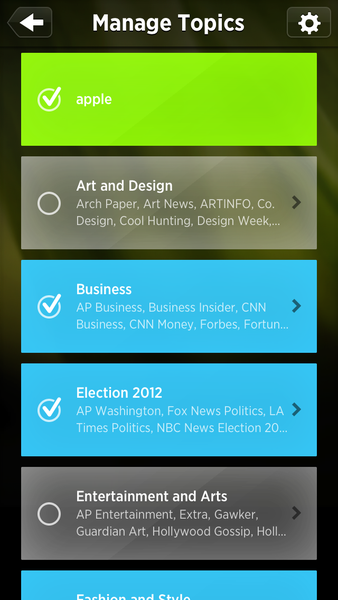
At 12 years old, Nick D’Aloisio began his career as a mobile programmer when he downloaded the Apple Developer Kit. By 15, one of his hacks, an app known as “Trimit,” caught the eye of an investor in Asia offering to fund “the company’s” next project.
What company? D’Aloisio, a school boy from South London, admitted to this venture capitalist that it was merely an after-school creation.
A whizz at the programming language C, D’Aloisio had created the app to test his skills in machine-learning technology, a branch of artificial intelligence that yields trends and patterns in a mass of data, and makes smarter predictions over time.

Above: Summly’s founder demoes the app in San Francisco
Less than a year later, the “Internet boy wonder,” as he was dubbed by the European tech media after an appearance at Le Web’s conference, had developed a keen interest in web summarization technology. It’s a simple enough problem, but the execution is tricky. How do we take a meaty piece of content and whittle it down to its bare bones?
Today, D’Aloisio is ready to take his iPhone app public. Summly, available to download for free, reduces full-blown articles into snippets, making it easier to skim the news on a mobile device.
From ESPN to VentureBeat, the app includes almost all of the major news outlets. You lightly tap the screen to browse news, and if a summarized story piques your interest, you can share it with your friends via SMS, email, Twitter, or Facebook, or click a link the bottom of the screen to access the original, full-length story.
 The founder told me he hit on the idea for the novel way to scan the news while studying for his History “GCSE” (an exam that all British school kids sit before their junior year). He quickly became frustrated by thousands of web search results that were slow to load and sometimes impossible to access on mobile.
The founder told me he hit on the idea for the novel way to scan the news while studying for his History “GCSE” (an exam that all British school kids sit before their junior year). He quickly became frustrated by thousands of web search results that were slow to load and sometimes impossible to access on mobile.
“There has to be a way to summarize this information into bite-size,” he said. Trimit, the app he developed, summarized content into 140, 500 or 1,000 character summaries. With a little finessing, he moved on to Summly, which can automatically break down full pages of text into bullet-points.
Most summarization experts have yet to apply their knowledge to a mainstream market. In a highly strategic move, D’Aloisio is applying the technology to the news, since, as he said, “No one had figured out how to perfect the news-reading experience on mobile.” In many cases, it’s relatively simple: Most journalists still write in the Associated Press (AP) style, so the first paragraph contains the crux of the news.
It’s not nearly as straight-forward as cropping the first few sentences, however. In the background, the technology works by scraping content, pulling out the most important bits, categorizing each story by topic, and displaying the news in a highly visual way. The summarized stories fit comfortably on your screen (tailored to both the iPhone 4 and 5).
At a coffee shop in San Francisco, D’Aloisio led me through a demo of the app: It’s a highly intuitive with the algorithm working to recommend news stories to you based on your pre-existing set of interests. As you shift location (from the UK to the U.S., for instance), the stories will change as well.
In person, D’Aloisio is wise beyond his years. It’s hard to believe this media-savvy, sharp-talking business executive is a teenager taking a leave of absence from school. He is both a high-school student and an employer. No longer a solo coder, he now has a team of seven people working for him. In addition, half a dozen researchers at SRI, the non-profit technology research institute based in Silicon Valley, are working with D’Aloisio to perfect the algorithm.
Some major technical hurdles remain: Magazine-style features are tougher to summarize, and are often thrown out by the algorithm. The team is currently working on auto-translation (notoriously problematic and obvious to anyone who has ever used Google Translate, BabelFish and the like), and they have plans to integrate French and Spanish into the app. If they get it right, it could be a neat language-learning tool.
The team will also butt heads with Pulse, Flipboard, and a host of other beautifully-designed news-reading apps, especially since it is in the process of designing an interface for tablet devices. To succeed, it will need to win over voracious news consumers who routinely use web-based aggregators like Google Reader. The competition for these users is heating up: Circa is experimenting with ways to re-frame the news on mobile, and NewsBlur, a Y Combinator alum, recently launched its iPad app.
Summly is backed by several investors, including Horizons Ventures, Ashton Kutcher, Betaworks, Brian Chesky, Hosain Rahman, Joanna Shields, Josh Kushner, Mark Pincus, Matt Mullenweg, Stephen Fry, Troy Carter, Yoko Ono and many more.
Top image: Wired UK

